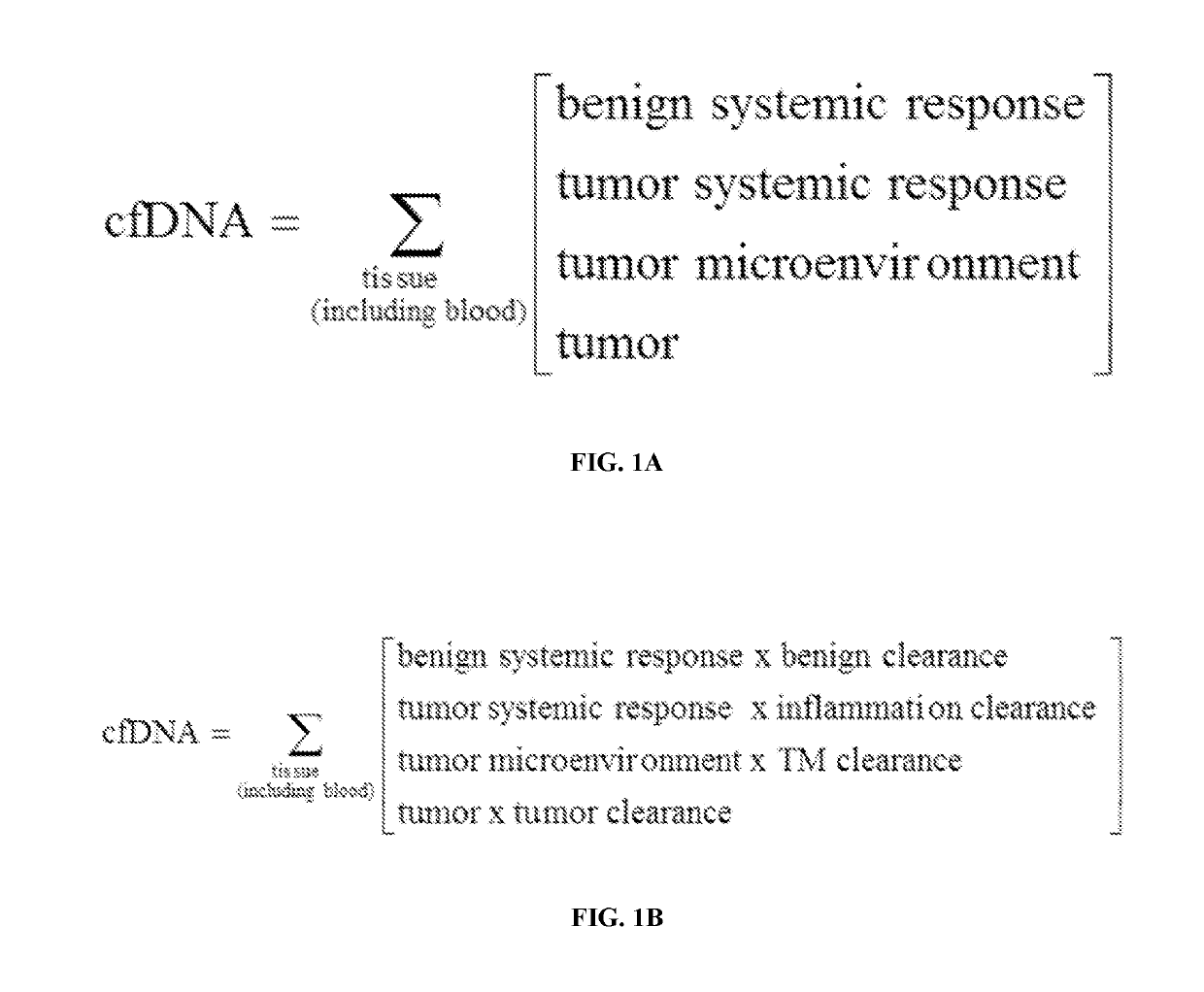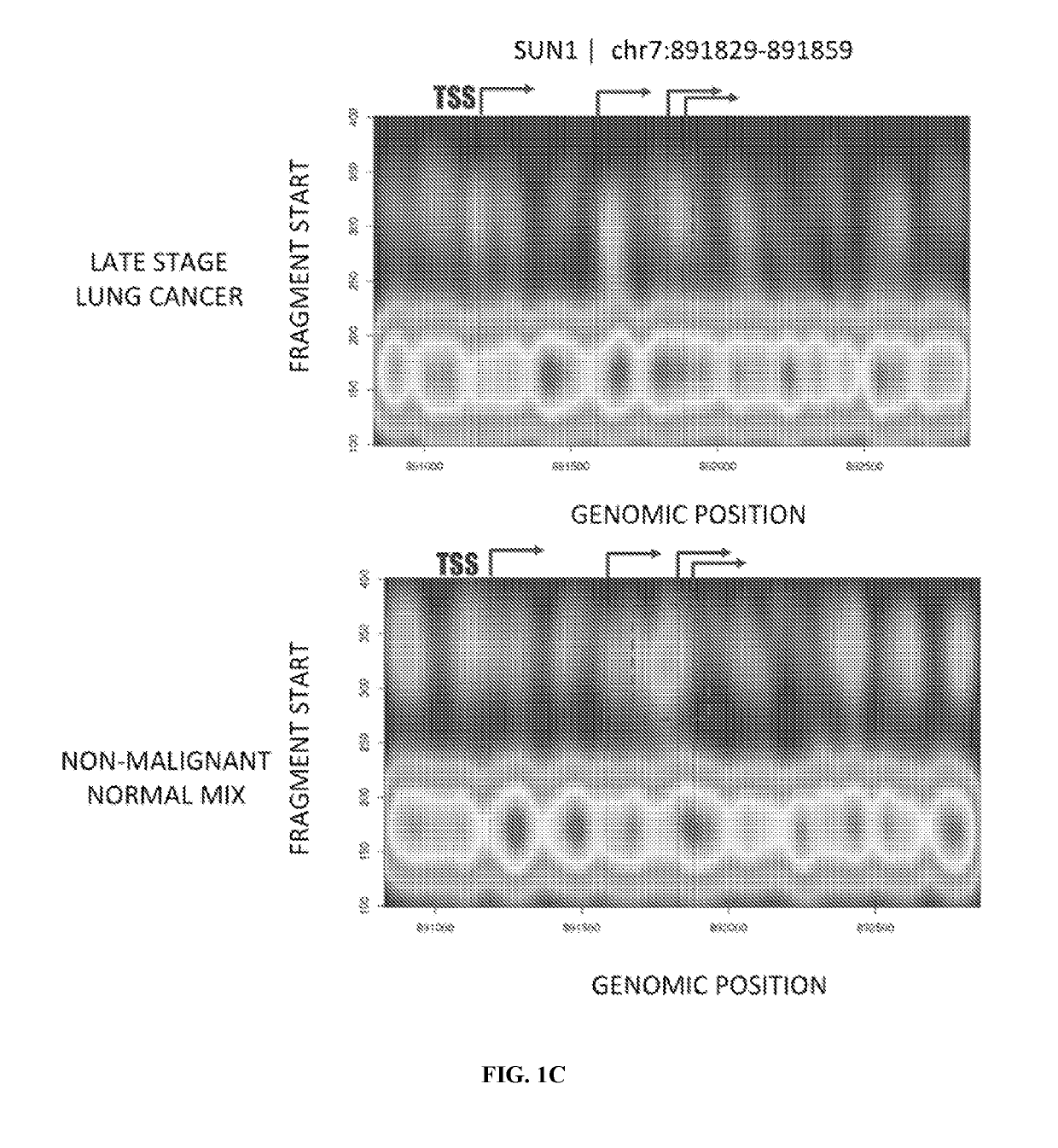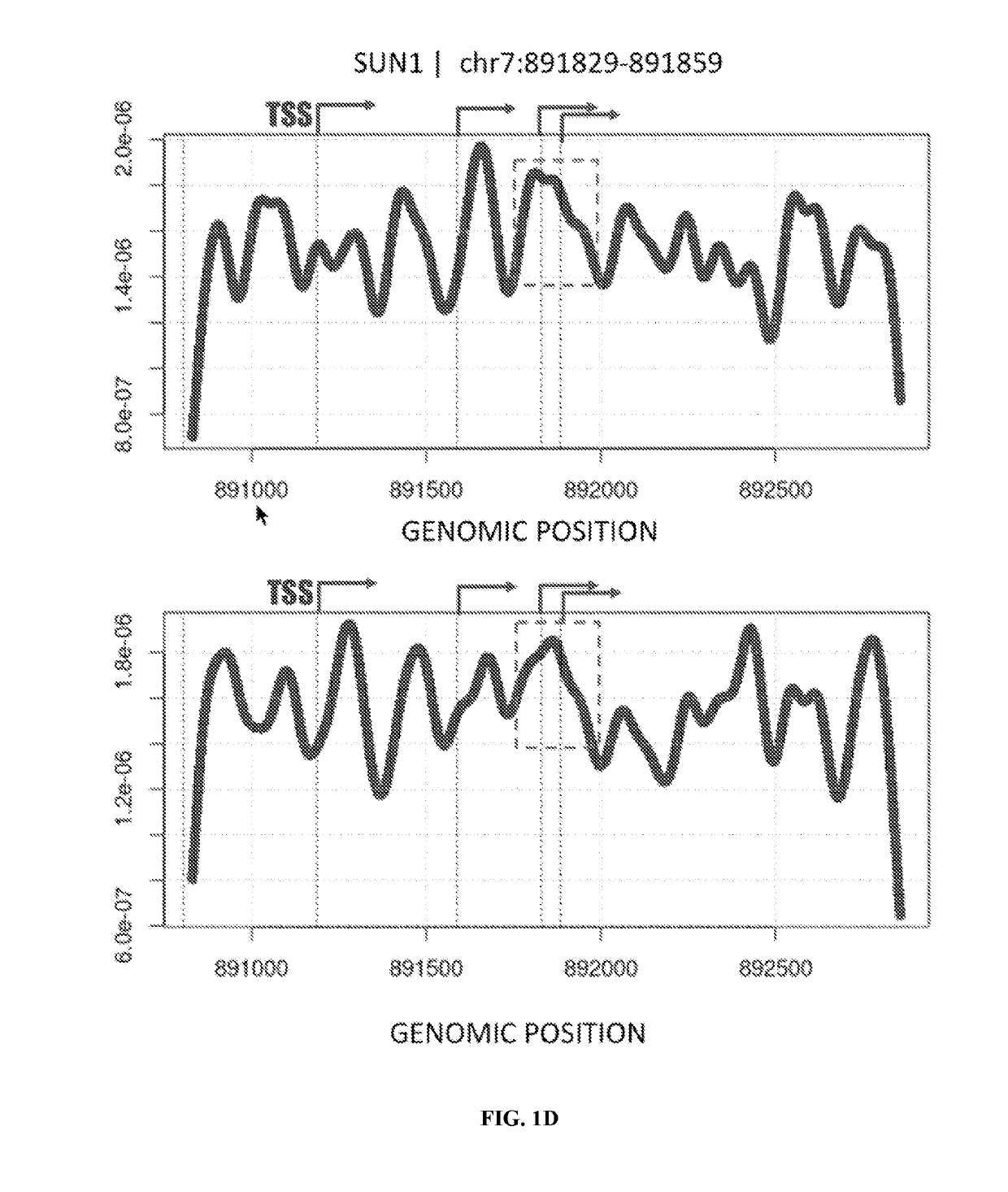Methods for fragmentome profiling of cell-free nucleic acids
a cell-free nucleic acid and fragmentome technology, applied in the field of cell-free nucleic acid cancer diagnostic assays, can solve the problems of increasing cell death and/or activation, reducing the level of endogenous dnase enzymes, and/or cfdna clearance, etc., and achieves the effect of reducing the number of dna over the protein surface, reducing the number of dna bending, and increasing the number of dna
- Summary
- Abstract
- Description
- Claims
- Application Information
AI Technical Summary
Benefits of technology
Problems solved by technology
Method used
Image
Examples
example 1
DNA Fragmentation Patterns Reveal Changes Associated with Somatic Mutations in the Primary Tumors and Improve Sensitivity and Specificity of Somatic Variant Detection
[0327]Cell-free DNA (cfDNA) isolated from circulating blood plasma comprises DNA fragments surviving clearance of dying cells and bloodstream trafficking. In cancer, these fragments carry a footprint of tumor somatic variation as well as their microenvironment, enabling non-invasive plasma-based tumor genotyping in clinical practice. However, the fraction of cancer-derived DNA is typically low, challenging accurate detection in early stages and prompting the search for orthogonal somatic variant-free patterns associated with cancerous state. Since genomic distribution of cfDNA fragments has been shown to reflect nucleosomal occupancy in hematopoietic cells, an experiment was performed (a) to observe heterogeneous patterns of cfDNA positioning in cancer in association with distinct mutations in patient tumors and (b) to ...
example 2
DNA Fragmentation Patterns (Fragmentome Profiling or “Fragmentomics” Analysis) Reveal Changes Associated with Tumor-Associated Somatic Mutations
[0330]Cell-free DNA (cfDNA) isolated from circulating blood plasma comprises DNA fragments surviving clearance of dying cells and bloodstream trafficking. In cancer, these fragments carry a footprint of tumor somatic variation as well as their microenvironment, enabling non-invasive plasma-based tumor genotyping in clinical practice. However, the fraction of cancer-derived DNA is typically low, challenging accurate detection in early stages and prompting the search for orthogonal somatic variant-free patterns associated with cancerous state. Because genomic distribution of cfDNA fragments has been shown to reflect nucleosomal occupancy in hematopoietic cells, an experiment was performed (a) to observe heterogeneous patterns of cfDNA positioning in cancer in association with distinct mutations in patient tumors and (b) to integrate cfDNA posi...
example 3
DNA Fragmentation Patterns (Fragmentome Profiling or “Fragmentomics” Analysis) can be Modeled as a Density for Anomaly Detection
[0334]A fragmentome profile can be modeled in 3D coordinate space as a density of observed fragment starts and length associated with specific conditions (e.g., malignant or non-malignant, with a malignant condition representing an anomalous case). Such fragmentome profiles may be obtained using a variety of assay methods, such as digital droplet polymerase chain reaction (ddPCR), quantitative polymerase chain reaction (qPCR), and array-based comparative genomic hybridization (CGH). Such “liquid biopsy” assays may be commercially available, such as, for example, a circulating tumor DNA test from Guardant Health, a Spotlight 59 oncology panel from Fluxion Biosciences, an UltraSEEK lung cancer panel from Agena Bioscience, a FoundationACT liquid biopsy assay from Foundation Medicine, and a PlasmaSELECT assay from Personal Genome Diagnostics. Such assays may re...
PUM
 Login to View More
Login to View More Abstract
Description
Claims
Application Information
 Login to View More
Login to View More - R&D
- Intellectual Property
- Life Sciences
- Materials
- Tech Scout
- Unparalleled Data Quality
- Higher Quality Content
- 60% Fewer Hallucinations
Browse by: Latest US Patents, China's latest patents, Technical Efficacy Thesaurus, Application Domain, Technology Topic, Popular Technical Reports.
© 2025 PatSnap. All rights reserved.Legal|Privacy policy|Modern Slavery Act Transparency Statement|Sitemap|About US| Contact US: help@patsnap.com



